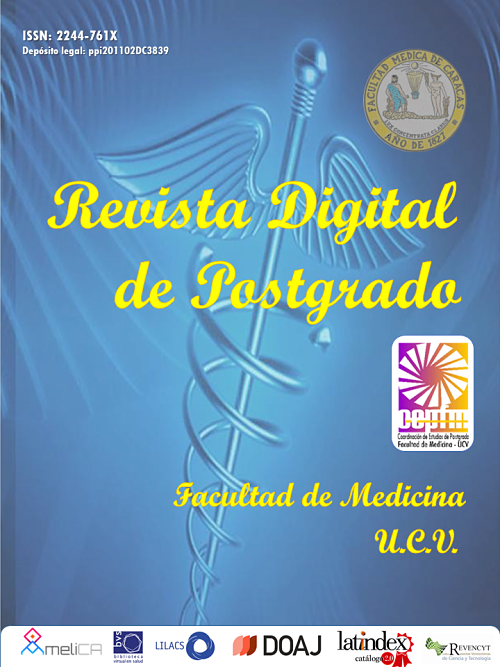Complications due to central venous access in adult patients
Abstract
Central venous accesses are a technique of regular use in the hospital environment, that is why the objective of this research is: to establish the incidence of complications associated to the placement of central venous accesses in patients treated at the University Military Hospital "Dr. Carlos Arvelo". Methods: prospective study, of intentional selection of patients in the hospital setting who present complications associated to the cannulation of central venous accesses; to whom a questionnaire was applied where, in addition to demographic and clinical data, the results of the central venous access operation were registered. On the seventh day, the central venous access was removed or replaced and a sample was taken for culture and antibiogram of the catheter tip. Data were tabulated, analyzed in graphs and tables. Conclusions: Internal jugular venous accesses were the most frequent procedures followed by subclavian accesses, with no predilection for laterality. When reviewing the findings, it can be evidenced that arterial puncture becomes the most frequent mechanical complication producing hematomas and ecchymosis with a high percentage of attempts longer than 30 minutes or a number of attempts longer than three, as well as infectious complications generated by Staphylococcus aureus and without these complications being associated to the type of approach studied, time of intervention or other demographic factors.
Keywords: Seldinger technique, Complications, Central venous access
Downloads
Published
How to Cite
Issue
Section
License
Usted es libre de:
- Compartir — copiar y redistribuir el material en cualquier medio o formato
- Adaptar — remezclar, transformar y construir a partir del material
- para cualquier propósito, incluso comercialmente.
Bajo los siguientes términos:
-
Atribución — Usted debe dar crédito de manera adecuada, brindar un enlace a la licencia, e indicar si se han realizado cambios. Puede hacerlo en cualquier forma razonable, pero no de forma tal que sugiera que usted o su uso tienen el apoyo de la licenciante.
- No hay restricciones adicionales — No puede aplicar términos legales ni medidas tecnológicas que restrinjan legalmente a otras a hacer cualquier uso permitido por la licencia.











